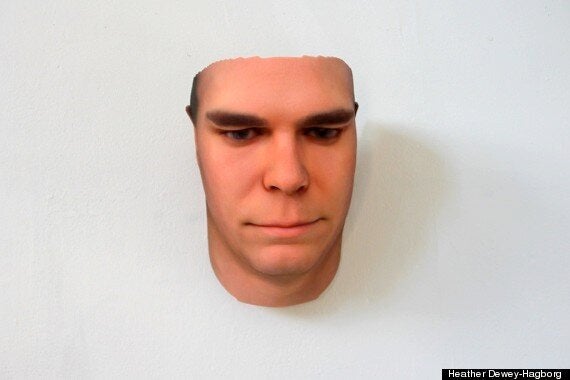Next time you throw away a cigarette butt or a piece of chewing gum have a little think where it could end up.
If American artist Heather Dewey-Hagborg finds it it you could find your DNA being used as part of a cool - but rather creepy - art project called 'Stranger Visions'.
Dewey-Hagborg sequences DNA from hair, nails, cigarette end and chewing gum found in public places on to create 3D portraits of the owner.

Look familiar?
There are limitations. A person's age can't be identified from DNA so all the portraits look around 25.
As for accuracy, Dewey-Hagborg says they are likely to have a "family resemblance" rather than an identical copy.
The question behind Stranger Visions actually came to me as I was sitting in my shrink’s office. I was staring at this generic print of a painting above the couch I and I noticed that the glass covering the print had a crack in it. As I looked closer I observed that in that crack was lodged a single hair. Now, as I am sitting there, ostensibly with the purpose of introspecting and talking about my feelings, my mind wanders to imagining who this person might be… Where are they from? What do they look like? How crazy are they?
And suddenly I imagine that I’m a forensic biologist, and I’ve captured this hair as evidence and extracted its DNA, and I’ve analyzed it to create a literal, figurative portrait of what this person looks like.
And the funny thing is that once you start thinking about it, you start seeing evidence – everywhere: public bathrooms, the sidewalk, a bar- people are leaving their DNA all over the place all the time!
It's a fascinating concept and as well as the artistic implications raises interesting questions about the ethics and ease of being able to profile someone's DNA.
This work is a provocation, designed to spur a cultural dialogue about genetic surveillance and forensic DNA phenotyping. What does it mean for an artist, an amateur, to do this? What are the implications for privacy issues as well as law enforcement?
Genetic surveillance is the viewing of a person’s genetic information without their knowledge or consent. As embodied creatures we leave genetic material around all the time – it’s part of what makes us human. We are constantly leaving traces, clues as to who we are. The possibility of genetic surveillance is the possibility of analyzing these artifacts to extract incredibly personal, intimate information – things you may not even know about yourself.
My personal primary concern with this technology is the potential that it becomes another form of racial profiling, one that hides its nuances and flaws behind an exterior of objective science.